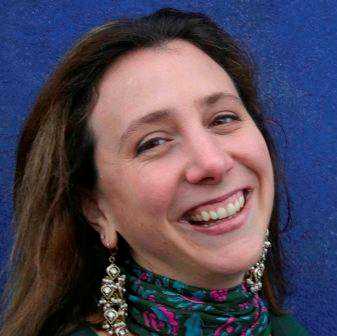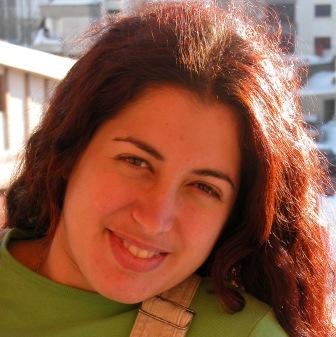الموضوع المختار
الحرب والحوار
دعنا نأخذك إلى ما وراء السطور، إلى ما وراء صور الموت والدمار التي لا تنتهي. هناك قصة أخرى حول الحرب يجب روايتها. إنها قصة نساء شابات تأثرن إلى حد عميق بالصراع الذي يدور في أنحاء العالم، ولكنهن صممن على التصرف بشكل إيجابي؛ وبدلاً من إضافة المزيد من التصرفات الهستيرية، فقد تصرفن ببعد نظر. إنهم يظهرن لنا كيفية تأثير الصراع على مجتمعاتهن، ويبحثن عن أسباب استمرار العنف، ويقدمن حلولاً مبتكرة لخفض المعاناة. ومن النادر أن نسمع وجهات نظرهن في وسائل الإعلام الحالية، ولكن حان الوقت لأن نبدأ في الاستماع لها.
موضوعنا الفرعي "الانحياز إلى أحد الأطراف" يستكشف الاستقطاب الناجم عن الحرب. إذا كنت عراقياً، ولكنك تعيش في الولايات المتحدة، هل الحرب تعني شيئاً حقيقياً بالنسبة لك؟ هل تولّد الحرب لديك شعوراً مختلفاً حول الدولة التي تعيش فيها؟ الموضوع الفرعي "التعايش مع الصراع" يتضمن قصصاً عن الحياة اليومية؛ كيف يجب أن تستمر الحياة، وكيف تستمر الحياة بالفعل، حتى تحت سيادة العنف. في الموضوع الفرعي "الأنماط الجامدة"، نهدف إلى إظهار الجانب الشخصي لجميع القصص التي لا تعرضها وسائل الإعلام علينا. سوف نقدم لك التجارب من كلا جانبي الصراع. في ديسمبر، تم منح جائزة نوبل للسلام إلى داعية سلام. ولتكريم هذه المناسبة، سوف نقدم لكم الموضوع الفرعي "صناع السلام"، مع التركيز على النساء العاملات من أجل التصالح ونزع السلاح. وبالاشتراك مع منظمات مثل الزمالة العالمية للتصالح ومنظمة العفو الدولية، نريد أن نشجعك على أن تأخذ موقفاً وتصنع تغييراً في عالمك، وذلك عن طريق مناقشة تستمر حول صناع السلام. الموضوع الفرعي الأخير في الحرب والحوار هو "الإرهاب". وفي هذا الموضع نذهب إلى ما هو أبعد من خداع وسائل الإعلام، نذهب إلى التأثير الحقيقي للإرهاب على الأرض، ونشاط النساء الشابات لخلق عالم لا تعمل فيه السياسات العالمية بدافع الخوف.
حوار
|
عندما يبدأ الصراع العسكري، فإنه توجد دائماً معركة أخرى في الخلفية. إنها معركة حول ولاء الناس؛ إنها جدال حول من هو المصيب ومن هو المخطئ. إن الحرب تستقطبنا وتجبرنا على الانحياز إلى أحد الأطراف: نحن ضد الآخرين، والعرب ضد الغربيين، والسنة ضد الشيعة. كيف ولماذا نرسم الحدود بين أنفسنا والآخرين أثناء فترات الصراع؟ ماذا يحدث عندما نعْلق بين هذه الخطوط، أو نحاول أن نفكر في ما وراء هذه الخطوط؟ إن تقارير الحرب تجلب عادة أنباء الأضرار الناجمة والعديد من الإحصائيات. دعنا نشارك معك القصص عن الناس الذين فتح لهم التوجه الودي والمواجهات القصيرة في جبهة القتال طريقاً لتغيير قلوبهم وعقولهم.

Paula Goldman, Director of Imagining Ourselves
المديرة الولايات المتحدة الأمريكية
People of different ethnicities intermingled easily before the genocide in Bosnia of the early ‘90s. But when violence began, the dividing lines between Serbs and Muslims became extremely dangerous to cross.
Throughout history, some of the most courageous acts have been made by people who questioned these kinds of boundaries: Serbs who risked their lives to save their Muslim neighbors from concentration camps (and Muslims who did the same for their Serbian neighbors). Israelis and Palestinians who brave criticism for working together with ‘the other side '... But is it possible to NOT to choose sides when a war breaks out? What pressures do you face in your own life to identify with one side of a conflict and not another?
|
|
يجب أن تستمر الحياة، حتى وسط الحرب. يجب الحصول على الطعام؛ سوف يقع الناس في الحب؛ وسوف يرغب الأطفال في اللعب. ومن خلال المقالات المعروضة في هذا القسم، فإن الوثائق التي تصف الحياة اليومية، حتى تحت سيادة العنف، تتيح لنا أن نشارك معك بعض القصص الممتازة التي تطلعك على المزيد من المعلومات عن كيفية تأثير الحرب على حياة الناس. فمن صور راشيل بابو عن مجندات الجيش الإسرائيلي، إلى ملاحظات واريشا فاراسات عن اليوم العالمي للمفقودين في كشمير؛ سوف نسافر خلال مختلف الأماكن والثقافات، ولكن سوف نشاهد العناصر المشتركة بين التجارب.

Zena el-Khalil
المديرة لبنان
This past summer, I experienced war directly for the first time. It started over night and was a surprise for most of us in Lebanon. One day I was going about my daily business, the next day there was war. I was trying to build my life in Lebanon, having only moved back from New York two years ago. I was building a family as I recently got married. I was taking care of my best friend who was diagnosed with ovarian cancer. I was building bridges between Beirut and New York, trying to start an artist exchange program between the two cities. I had just finished curating a big art exhibit that included 23 young Lebanese women artists. I was dreaming big for post-war Lebanon.
During the 34 day Israeli siege, I was tested in many ways. I experienced loss and pain. I experienced food, fuel and electricity shortages. No one went to art shows anymore. My best friend's hospital was a heartbeat away from shutting down. The list goes on... However, I learned how to cope. And then after some time, I also learned how to live.
|
|
إذا كنت تعتقد أن صنع السلام يقتصر على الشباب الساذج من النشطاء، أو على رجال يلبسون السترات ويمثلون الحكومات القوية، فيجب عليك أن تعيد التفكير في رأيك. إن الشابات في هذا القسم يقفن على جبهة إيجاد الحلول البناءة للحرب. إنهن يتمتعن بالذكاء، والنشاط، والفعالية. تعرف على سامانثا باور، الكاتبة الحائزة على جائزة بوليتزر التي تحفز آلاف الأمريكيين على مطالبة حكومتهم بأن تبذل المزيد من الجهود لمنع الإبادة العرقية في أنحاء العالم. تعرف على ماريان بيرل، زوجة الصحفي القتيل دانييل بيرل، التي حولت تجربتها بفقدان زوجها إلى مطالبة عامة قوية لتحقيق تسامح أكبر. تعرف على لونج أونج، إحدى الناجيات من المذابح العرقية في كمبوديا، وساهم دفاعها في الحملة لمنع استخدام الألغام الأرضية. إن العاشر من ديسمبر هو يوم منح جائزة نوبل للسلام إلى إحدى الشخصيات الاجتماعية البارزة. ونحن نخصص هذا القسم إلى مجموعة من الشخصيات البارزة الخاصة بنا – نساء شابات في كل ركن من أركان الكرة الأرضية اللاتي بذلن جهودهن لتزويدنا بالحلول البديلة للصراعات التي تتميز بالعنف.

International Fellowship of Reconciliation
المديرة هولندة
Worldwide, people want and are desperately looking for alternatives to the violence that is engulfing us. The Women's Peacemakers Program at the International Fellowship of Reconciliation unites people around just such an end. We believe that without peace, development is impossible-- and that without women, neither peace nor development can take place. In every corner of the globe, we support and unite courageous women who are creating alternatives to conflict in their communities.
Join us in the conversation about positive solutions to war!
|
|
أثناء هدير القتال الناجم عن صراخ القنابل، وهجمات مدافع الهاون، وتقارير الموت والدمار، فإننا كثيراً ما نسمع شخصاً يقول "إنهم يستحقون ذلك". عند مشاهدة الصراع، ما هي صور العدو التي تمكننا من وصفه بأنه غير آدمي؟ إذا جلسنا لنشرب الشاي مع هؤلاء الأشخاص، كيف يختلفون عن الصورة التي يقدمها لنا التلفزيون عنهم؟ إن أعمال زينة الخليل تظهر لنا الفرق بين صورة نصر الله في الخارج وصورته داخل لبنان. إن صورة مارلا كولمان عن النساء الإسرائيليات في الضفة الغربية تظهر لنا صورة لسيدة مستوطنة أكثر اختلافاً عما نراه عادة في وسائل الإعلام. إن النساء في هذا الموضوع الفرعي تأخذنا إلى ما وراء القوالب الجامدة ذات البعد الواحد للجانب الآخر، وتظهر لنا مدى تعقد الحياة على الأرض في مناطق الصراع.

Lisa Ling
المديرة الولايات المتحدة الأمريكية
As a reporter, I've covered conflicts around the world-from Algeria, to Nepal, to Afghanistan. I know how much impact the media has on our perceptions of war and 'the enemy.' I'm worried about stereotypes that the media often supports. I worry about the way Americans are perceived abroad.
I worry about the way Americans perceive the rest of the world. If we're ever going to find more sensible solutions to conflict, we absolutely need to dig down beneath these one-dimensional portraits of each other. Join us in the conversation.
|
|
الإرهاب: هو الكلمة التي تعرّف الجدال العالمي، هو هدف بلايين الدولارات التي تنفقها الحكومات. لكن كيف نعّرف مصطلح الإرهاب لأنفسنا؟ كيف نخوض تجربته في حياتنا الخاصة؟ والأهم من ذلك، كيف نعيش في عالم تعمل فيه السياسات العالمية بدافع قوى الإرهاب والخوف؟ سونيا فاليرو تكتب عن الطريقة التي عومل بها المسلمون في الهند بعد انفجارات بومباي. كما أن الفيديو المثير الذي صورته ليزا لينج يعرض لنا أسباب مشاركة النساء في هجمات القنابل الانتحارية. إن المعلومات التي في هذا الموضوع الفرعي لا يسهل استيعابها، ولكنها تقدم لنا وجهات نظر عميقة حول موضوع الإرهاب، وقد تقودنا وجهات النظر هذه إلى المزيد من الحلول البناءة.

Imagining Ourselves Team
المديرة الولايات المتحدة الأمريكية
Terror: it is a word defining a global debate controlled by the media. In the past five years many of us have felt the threat and horror of acts of terrorism. But how to we define the term ‘terror’ for ourselves? And more importantly, how can we contribute to a world in which terror and fear are not the driving forces of global politics?
The Imagining Ourselves Team invites you to join in the conversation!
|